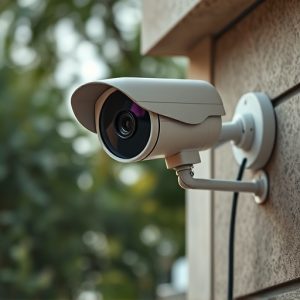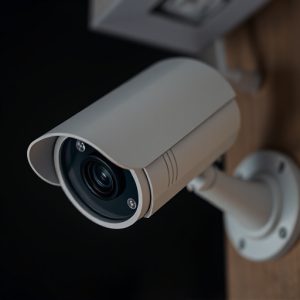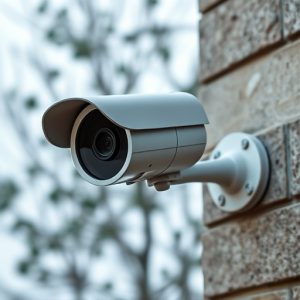Empty Camera Housings: Unveiling Fake CCTV’s Motion Sensor Secrets
Fake CCTV cameras with motion detection, or "dummies," are becoming a popular yet deceptiv…….
Fake CCTV cameras with motion detection, or "dummies," are becoming a popular yet deceptive security solution. While visually similar to real cameras, they lack functional components and offer limited benefits during incidents. These decoys enhance security by simulating active surveillance, deterring crimes through psychological fear, especially in high-risk areas like entry points and parking lots. Strategically placed, they reduce break-ins and theft, providing cost-effective, discreet protection for both commercial and residential properties.
“Uncover the power of deception with empty security camera housing units—a clever strategy to enhance your property’s security. This comprehensive guide explores the world of ‘fake CCTV cameras with motion’ sensors, offering a unique approach to deter crime.
We’ll delve into understanding these decoys, their benefits, and strategic placement techniques. From motion sensor technology to the various types available, this article provides insights to help you make informed choices for effective security measures.”
- Understanding Fake CCTV Cameras: A Comprehensive Guide
- The Role of Motion Sensors in Security Camera Decoys
- Benefits of Using Empty Security Camera Housing Units
- Types and Placement Strategies for Effective Deception
Understanding Fake CCTV Cameras: A Comprehensive Guide
Fake CCTV cameras, often referred to as “dummies” or “mock-ups,” have become a prevalent concern in security systems. These are visually indistinguishable from real cameras but lack the crucial components for surveillance, such as lenses and processing units. They can be easily mounted outdoors or indoors, mimicking the appearance of active security measures while providing no actual monitoring capabilities. This deceptive practice is particularly enticing for criminals due to its apparent effectiveness in deterring potential offenses.
In terms of functionality, Fake CCTV Cameras With Motion are designed to mimic real camera behavior, often triggered by external stimuli like motion sensors. However, their response time and precision are significantly inferior to genuine cameras. They may capture vague or distorted images, offering no discernible video evidence during an incident. Understanding the subtle differences between authentic and fake surveillance equipment is essential for property owners and business managers aiming to enhance security without falling for deceptive solutions.
The Role of Motion Sensors in Security Camera Decoys
The use of motion sensors is a key component in enhancing the effectiveness of security camera decoys, also known as fake CCTV cameras. These sensors play a vital role in simulating active surveillance, deterring potential criminals from targeting secure areas. When an object or person moves within the sensor’s range, it triggers the camera to capture footage, mimicking the response of a genuine security system. This technology is particularly useful for deterring theft, vandalism, and other illicit activities as it creates the illusion of constant monitoring.
Fake CCTV cameras with motion capabilities are often employed as a cost-effective alternative to traditional security measures. By strategically placing these decoy cameras around high-risk areas, businesses and homeowners can significantly reduce crime rates. The sensors’ ability to detect motion allows for prompt responses to intrusions, providing a powerful psychological deterrent without the need for constant human surveillance.
Benefits of Using Empty Security Camera Housing Units
Empty security camera housing units offer a unique and innovative solution for property owners and businesses seeking enhanced security. One of the primary benefits is their ability to deter potential criminals through the visible presence of Fake CCTV Cameras With Motion. These unoccupied housings act as a powerful visual deterrent, sending a clear message that surveillance is in place, even if there’s no actual camera inside. This simple yet effective strategy can significantly reduce break-ins and theft.
Moreover, these housing units are versatile tools for strategic placement. They can be discreetly installed in various locations, providing a sense of security without the need for extensive wiring or complex setups. This flexibility allows for a more comprehensive view of vulnerable areas, offering peace of mind to those concerned about property safety.
Types and Placement Strategies for Effective Deception
Security camera housing units that mimic real cameras but are empty on the inside, often referred to as fake CCTV cameras with motion detection, offer a powerful tool for enhancing security through deception. These devices can be strategically placed in high-risk areas to deter potential criminals by giving the appearance of active surveillance. The types vary from simple, static replicas to advanced models that simulate real camera function with infrared technology and motion sensors.
Placement is key when utilizing these decoys. They should be mounted at eye level or higher, ideally in plain sight, to maximize their psychological impact. Common locations include entry points, walkways, parking lots, and areas where valuable assets or sensitive information are stored. By integrating fake cameras alongside genuine security setups, business owners and property managers create an illusion of comprehensive surveillance, making would-be intruders less likely to attempt unauthorized access.
Empty security camera housing units offer a practical and cost-effective solution for enhancing security. By strategically placing these decoys, equipped with motion sensors and fake cameras, individuals and businesses can deter potential intruders effectively. This non-intrusive approach, coupled with the realistic appearance of modern fake CCTV cameras with motion, creates an illusion of constant surveillance, thereby encouraging respectful behavior and safeguarding valuable assets.


